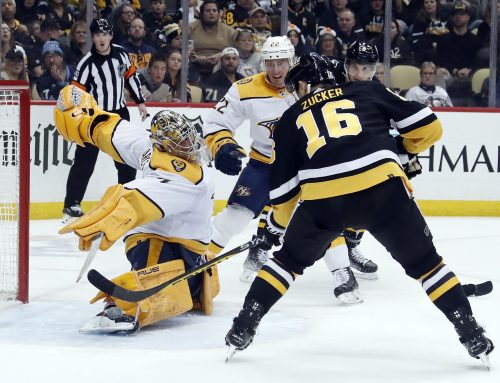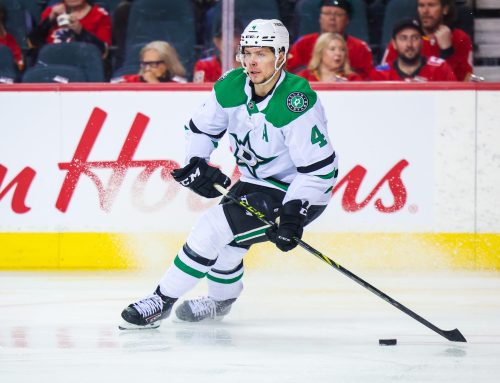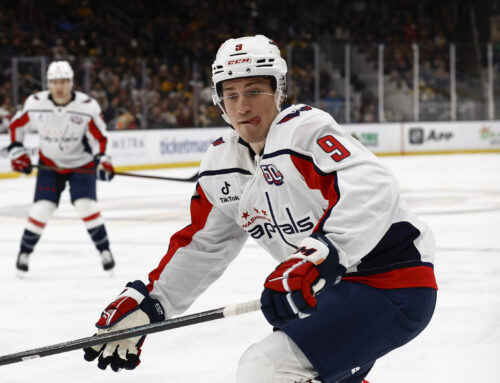
This week's Capped discusses the news that the salary cap will be increasing between four and seven percent for the upcoming season.
****
The old adage says that the rich get richer. Well it seems as though upcoming free agents are going to be ending up with a little extra pocket change again this year. According to commissioner Gary Bettman, the salary cap stands to increase between $3-7 million. The upper end of that would be the largest percentage increase since the $6.4 million jump from $50.3 million in 2007-08 to $56.7 million in 2008-09. Here are some of the most impactful conclusions we can draw from this to apply to our fantasy hockey experiences.
****
The Immediate Impact
The immediate impact here really just comes down to how greedy creative teams will be at using the extra space. Teams will have an added amount to overpay free agents, take on cap dumps, and generally push rookies down the lineup. The 2018 free agent class will hit July first knowing that each team has just opened up cap space, meaning there will be more bidding wars than we have seen in the last few years. The free agent crop has some intriguing names, however we all know that very few of the big names actually make it to the open market anymore.
Top players such as John Tavares, John Carlson, Patrick Hornqvist, among others, will likely re-sign with their current squads. Possible rentals at the trade deadline including James Neal, Cam Ward, Daniel and Henrik Sedin, may end up re-signing with their “renter” team. This usually leaves the market fairly barren, leading to the assumption that individuals expected to test the market in the mold of Joe Thornton, James van Riemsdyk and Mike Green could end up with much larger contracts than expected. We saw both Thornton and former teammate Patrick Marleau hugely exceed their expected salaries last summer, and this was after a much smaller cap bump. Again, be wary of your cap league players who are expecting new deals this summer, they will probably be getting more than you expect, whether they make it to July first or not.
****
The Rookies
We all know that rookies are highly valued in cap leagues, but for the next three years, they will probably be even more valuable than before. When the Collective Bargaining Agreement (CBA) underwent a massive upheaval during the 2005 lockout, the salary cap was implemented. At that time, the salary cap sat at $39 million, while the maximum cap hit for a rookie was $925,000. The salary cap projects to be at least double what it was a dozen years ago, and the maximum cap hit for a rookie next season will be… $925,000.
The top end players have seen their contracts increase, the median contract has increased by a couple million, while the bottom is still in the exact same place. Now more than ever, winning a cap league is about having a solid core of young players that can allow you to continue to roster these growing contracts. This is why even though there are more players on big-money contracts who warrant ice time, rookies are playing a more prominent role than ever, because teams need to use the cheapest contracts to fill their lineups. Until the next CBA when this inequality will likely be rectified, rookies will only increase in value in your league. It might be too late to get ahead of the curve here, but at least open your eyes to these changes so that you don’t get left behind.
****
The Existing Contracts
Take note of what some of the best bargain contracts are in the NHL today. Most of the best ones, like those of Tavares, Tyler Seguin, Max Pacioretty and Blake Wheeler, were signed no later than the 2013-14 season. Over that time, those contracts have gone from fair value to a complete steal. Most of them don’t even take that long to become a bargain either. Take a look at some of the long-term contracts signed over the past few summers, and we see that players who we thought were getting fair value at the time, are already way ahead of where their contract dollars say they should be. Nathan MacKinnon, Filip Forsberg, Mika Zibanejad, and John Klingberg to name a few.
Take some time in your league to see if you can lock yourself into any of these longer commitment deals that are scaring off other GMs. The salary cap is not going down anytime soon, and if you can have the same team at the same cap hit three years down the line, while all of the other GMs are turning over their roster, adding money all the time, then the league will be ripe for the picking. Add in some development from your farm team, plus a deadline acquisition or two, and your roster could be the dynasty that is so tough to create in a cap league.
For those of you with eyes already looking three years down the road, just remember that a rebuild doesn’t have to mean sacrificing every roster player for picks. It just means targeting a window past this season in which to have your team peak.
***
That caps off another Thursday. Thanks for reading! As always, you can find me on twitter @alexdmaclean where I post some of my other smaller musings that don’t make it into the articles.
One Comment
Leave A Comment
You must be logged in to post a comment.





 WSH
WSH CAR
CAR WPG
WPG DAL
DAL TOR
TOR DET
DET MIN
MIN EDM
EDM VGK
VGK FLA
FLA STL
STL

I can’t believe you didn’t use Scheifele as an example – one of the best long-term bargains in the entire league.
And also, I don’t really see the Sedins going anywhere. But anyways, good job as always. :)